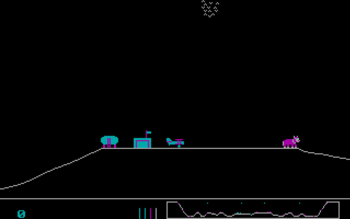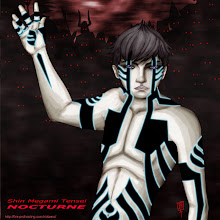Sauerbraten (video game)
From Wikipedia, the free encyclopedia
| Sauerbraten | |
|---|---|
 | |
| Developer(s) | Lee Salzman, Wouter van Oortmerssen, Mike Dysart, Robert Pointon [1] |
| Designer(s) | Wouter van Oortmerssen |
| License | Zlib License |
| Version | CTF Edition (June 17, 2008) |
| Platform(s) | Cross-platform |
| Release date(s) | May 6, 2004 |
| Genre(s) | First-person shooter, Role-playing game |
| Mode(s) | Multiplayer, Singleplayer |
| Rating(s) | ESRB: Not Rated (NR) |
| Media | Download |
| Input methods | Keyboard and Mouse |
Sauerbraten (also known as Cube 2 or Sauer, German for “sour roast”) is a cross-platform, Quake-like, first-person shooter computer game that runs on Microsoft Windows, Linux, FreeBSD and Mac OS X using OpenGL and SDL. The game features single-player and multiplayer game play and contains an in-game level editor, its main feature. The game engine is free and open source software, under the Zlib License,[2] with commercial support available from the developer's own business counterpart, Dot3 Labs.[3]
The game started as a redesign to the original Cube Engine, and its first release was made on May 6, 2004. The latest release, dubbed the "CTF Edition", debuted on June 17, 2008.
Contents |
Technical details
Sauerbraten shares most of its design goals and philosophy with its predecessor, but using a new 6-directional heightfield (or octree) world model. This allows much more complex level geometry and easier editing. The aim of this project is not necessarily to produce the most features and eye candy possible, but rather to allow map/geometry editing to be done in realtime within the game environment, while keeping the source code small and elegant.
Realtime editing
Each cube-shaped node in the octree represents a renderable volume, simply referred to as a cube, where each edge of this cube can be lengthened or shortened to deform the cube into a variety of other shapes. The "what you see is what you get" realtime editing has enabled designers to add a lot of detail to maps, while reducing the time spent on actual creation. This is in contrast to traditional modern polygon soup 3D engines which take a model generated as an essentially random batch of triangles from an external modelling program and attempt to spatially subdivide the model's triangles after the fact by splitting them to fit into tree structures, such as a BSP tree or even an octree, that require costly pre-processing to build. Cube 2's novelty thus lies in that the world representation is the octree itself, from which efficient triangle batches are generated for the graphics processing unit to render, without need for expensive and time consuming pre-processing.
Rendering engine
Cube 2's rendering engine is designed around modern graphics processing units, which perform best with huge batches of geometry already stored in video memory. Lighting is precomputed into lightmaps for efficient batching, with an additional stored directional component, that allows for efficient shader-based lighting effects. The original Cube's rendering engine assumed that overdraw (where polygons that do not appear in the final scene are occluded via the z-buffer) was more expensive than sending new streams of triangles to the graphics processing every frame, which vastly limited its performance on more modern hardware where memory bandwidth is a greater limiting factor. The latest release (CTF edition) supports a precomputed visibility system (PVS) for graphics cards that do not support hardware occlusion.
Gameplay
The game currently has singleplayer and multiplayer modes. Multiplayer functionality is possible with LAN, Local, and Internet play, which gets its server listings from a master server. Online offers deathmatch, last man standing,"Capture" (where teams vie over control of points on the map), Quake-style Capture the Flag, also instagib versions of some of the game modes (Instagib, Insta-clan-arena, insta-capture) as well as online cooperative map editing, which is one of Sauerbraten's most interesting and popular features. There are also single player modes featuring both episodic gameplay and also deathmatch on multiplayer maps with AI bots instead of human opponents over the internet.
Media coverage
The game has been shown in a Burger King television commercial.[4] It also received four out of five stars in a MacWorld UK review.[5] In addition, the game was mentioned in Issue 3 of Games for Windows: The Official Magazine (as well as their 101 Free Games Article), where it was described as being "perfect for both stingy and creative gamers alike".[6]
The CTF edition was reviewed positively by Phoronix, a Linux-focused hardware and software review website,[7] as well as Linux.com,[8] a website providing news related to free and open source software.
See also
References
- ^ Sauerbraten Team (2008). "Sauerbraten Credits/Authors". Sauerbraten. Retrieved on June 12, 2008.
- ^ Sauerbraten Team (2008). "Sauerbraten License". Sauerbraten. Retrieved on June 12, 2008.
- ^ Dot3 Labs (2008). "Dot3 Labs - Sauerbraten Technology". Dot3 Labs. Retrieved on June 12, 2008.
- ^ Wouter van Oortmerssen (2006). "Sauerbraten in Burger King TV commercial!!". Cube Engine Games. Retrieved on February 22, 2007.
- ^ Hodge, Karl (2007-06-29). "Cube 2: Sauerbraten Review". MacWorld UK. Retrieved on 2007-07-17.
- ^ Games for Windows: The Official Magazine: page 58, February 2007
- ^ Larabel, Michael (2008-06-21). "Sauerbraten CTF Edition". Retrieved on 2008-06-22.
- ^ Sharma, Mayank (2008-08-26). "Frag 'em in your own backyard with Sauerbraten". Retrieved on 2008-08-28.















